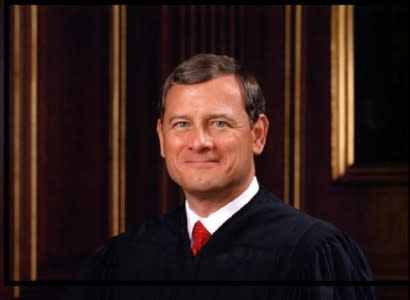Disabled students’ education rights upgraded by Supreme Court
Students with disabilities have a legal right to educational support at school that will enable each one to make measurable progress, the Supreme Court ruled unanimously on Wednesday. It is not enough that progress is simply more than a bare minimum, the court said in an opinion written by Chief Justice John G. Roberts, Jr.

Since 1975, federal law has guaranteed a “free appropriate public education” to all disabled students attending schools that receive federal funds. But, until now, the court had never attempted to define a standard to judge, for each child, what was “appropriate.”
In attempting that task Wednesday, the court left a good deal of discretion to the expertise of school officials and their advisers, but it insisted that the outcome of each student’s plan had to be calculated to promise something beyond “some educational benefit.”
It took a two-step approach: one for students able to be taught in regular public school classrooms – an educational approach sometimes referred to as “mainstreaming” -- and a separate one for students whose needs can be met only in special education classes or in specialized schools.
For those in regular classes, the ruling said, each child’s plan must assure that he or she can keep up and can advance from grade to grade. It is not necessary, however, that the quality of each disabled student’s progress must be equal to that of their classmates who are not disabled, the court stressed. The usual measures of students’ progress in regular classes – exams, grades, and regular promotion – can be used for those students, it added, commenting: “Progress through this system is what our society generally means by an ‘education.’ ”
For students whose individual capacities require them to be taught in a specialized educational environment, the ruling said that each child’s plan need not necessarily result in regular promotion, grade to grade. But, it added, each such child “should have the chance to meet challenging objectives.”
The Chief Justice summed up: “When all is said and done, a student offered an educational program providing ‘merely more than de minimis’ [bare minimum] progress from year to year can hardly be said to have been offered an education at all. For children with disabilities receiving instruction that aims so low would be tantamount to sitting idly awaiting the time when they were old enough to drop out.”
The reference to a low standard of “more than minimum” educational benefit was to the approach taken by the U.S. Court of Appeals for the Tenth Circuit, and which the Justices rejected Wednesday in the case of Endrew F. v. Douglas County School District.
The case involved an autistic Colorado boy whose parents put him in a special school for autistic students in Denver after they became dissatisfied with several annual plans worked out for him by public school officials in his community outside Denver.
The Tenth Circuit Court ruled in favor of the local school district, applying several precedents of that Circuit Court following the “bare minimum” approach. One of the precedents on which the three-judge Circuit panel relied was a 2008 opinion written by Circuit Judge Neil M. Gorsuch. Several advocacy groups that are opposed to Judge Gorsuch’s nomination to be a Supreme Court Justice immediately sought to use the new ruling in the Colorado case as a new point of opposition.
The Supreme Court was in regular session on Wednesday even as Judge Gorsuch’s nomination continued under review across the street before the Senate Judiciary Committee.
In a second significant ruling on Wednesday, the Justices by 6-to-2 vote decided that companies that design uniforms for cheerleaders and other forms of sports clothing are legally entitled to obtain copyright protection on the specific design layouts of stripes, chevrons, and colors.
Justice Clarence Thomas wrote the majority ruling, declaring that the fact that such design features are used on useful clothing articles does not make them ineligible for the exclusive right to use those designs. Justice Stephen G. Breyer dissented, joined by Justice Anthony M. Kennedy.
Legendary journalist Lyle Denniston is Constitution Daily’s Supreme Court correspondent. Denniston has written for us as a contributor since June 2011 and has covered the Supreme Court since 1958. His work also appears on lyldenlawnews.com.

